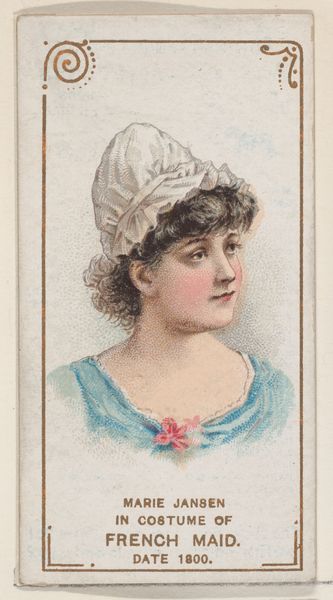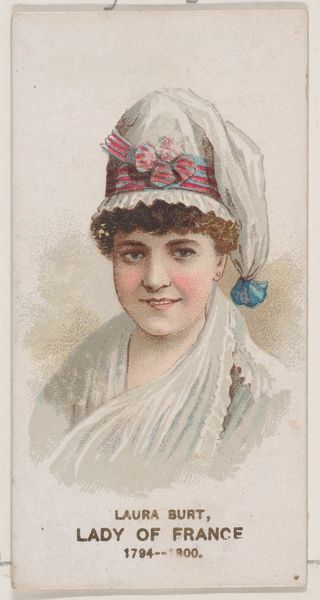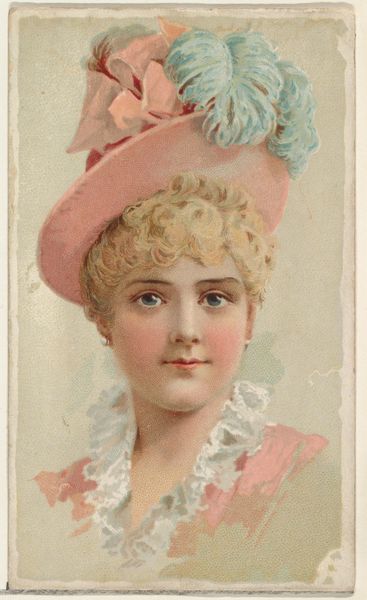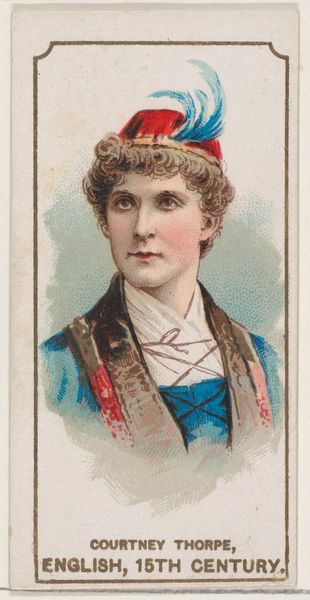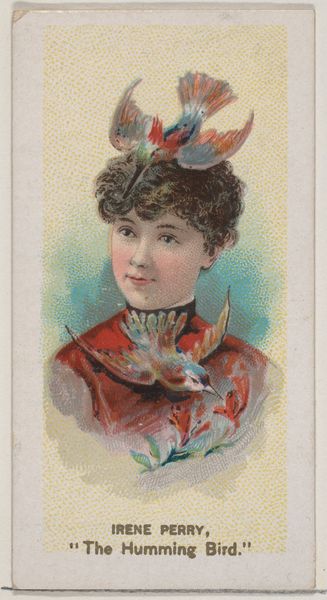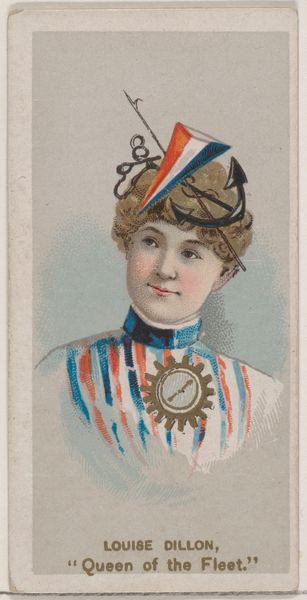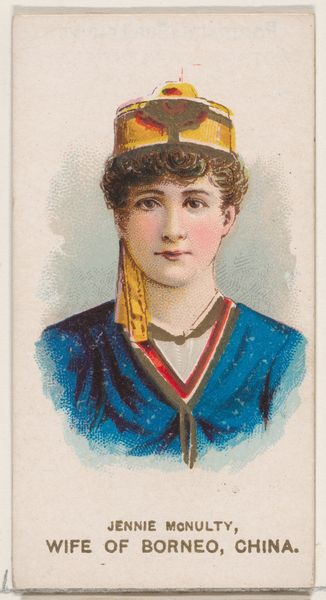
Theo in Modern Persian Costume, from the set Actors and Actresses, First Series (N70) for Duke brand cigarettes 1888 - 1889
0:00
0:00
drawing, coloured-pencil, print
#
portrait
#
drawing
#
coloured-pencil
# print
#
impressionism
#
caricature
#
coloured pencil
#
folk-art
#
portrait drawing
#
watercolour illustration
Dimensions: Sheet: 2 3/4 x 1 1/2 in. (7 x 3.8 cm)
Copyright: Public Domain
This small chromolithograph was created around 1900 by W. Duke, Sons & Co. as part of a series of collectible cards included in cigarette packs. It depicts a woman named Theo dressed in what is described as ‘modern Persian costume.’ The image's appeal lies in its exoticism, reflecting the late 19th-century fascination with the ‘Orient,’ viewed through a Western lens, and its intention was to add value to a commercial product. Such cards were hugely popular, offering consumers a glimpse into other cultures, albeit a romanticized and often inaccurate one. The institutional history here concerns the use of art in advertising and how images were circulated and consumed. As historians, we look critically at these sources, researching the cultural context and institutional forces that shaped their production and reception, and using trade catalogues, company records, and consumer surveys to better understand their appeal. The meaning of this artwork, therefore, is tied to its role as a commodity and its reflection of Western attitudes towards other cultures.
Comments
No comments
Be the first to comment and join the conversation on the ultimate creative platform.
